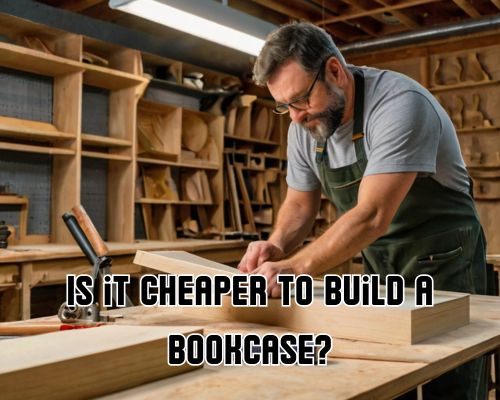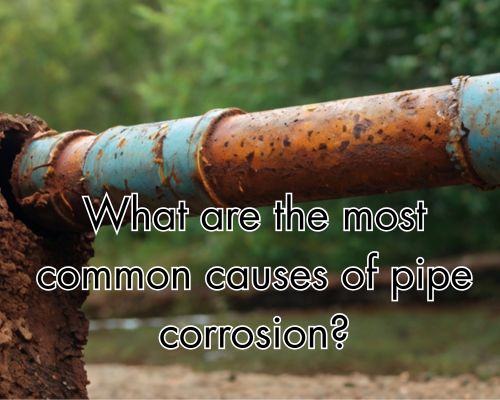Is It Cheaper to Build a Bookcase? A Mornington Guide to DIY vs. Buying
Is It Cheaper to Build a Bookcase? A Mornington Guide to DIY vs. Buying
When it comes to furnishing your home, few pieces combine function and aesthetic as seamlessly as a well-crafted bookcase. But as costs of living and renovations rise across Australia, many Mornington homeowners are left pondering: Is it cheaper to build a bookcase yourself, or buy one pre-made? The answer isn’t just about dollars and cents—it’s about materials, craftsmanship, local market prices, and your own skills.

With Leona Rodriguesi of Mornington Cabinet Makers, we break down the real costs and considerations of building versus buying a bookcase, helping you make a smart, stylish, and budget-conscious choice.
Understanding the True Costs: DIY vs. Store-Bought
The key to determining whether building your own bookcase is cheaper lies in understanding total project costs, not just the price tag on a flat-pack unit from a local retailer. Let’s look at both sides.
Cost Breakdown: Building a Bookcase Yourself
If you’re considering going the DIY route, here’s what you’ll need to budget for:
1. Materials:
- Timber – Plywood or MDF (Medium Density Fibreboard) are the most common. In Mornington, quality MDF starts at around $45 per sheet, while hardwood can cost upwards of $90–$150 per panel depending on grain and thickness.
- Fasteners – Screws, nails, brackets, and glue: budget around $10–$25.
- Paint or Stain – If you want a professional finish, expect to spend $20–$50.
- Sandpaper & Sealant – Add another $10–$15.
2. Tools (if you don’t already own them):
- Circular saw: $80–$120
- Drill: $50–$100
- Level & measuring tools: $15–$30
- Clamps & safety gear: $20–$50
🧠 Estimated total for a basic DIY bookcase:
If you already own tools: $100–$200
If you’re starting from scratch: $250–$400
These numbers vary depending on size and finish. A custom 5-shelf bookcase (approx. 180cm tall) made from pine can fall at the lower end of this range.
Cost Breakdown: Buying a Bookcase in Mornington
Whether you’re shopping at IKEA Springvale, local favourites like Peninsula Furniture Gallery, or Bayside Furniture, the price of a new bookcase in Mornington typically ranges from:
- Budget MDF units – $70–$120
- Mid-range timber bookshelves – $150–$300
- Designer or hardwood models – $400–$1,000+
Plus, consider delivery fees (often $50–$100 depending on location and store policy).
Factors That Affect Cost Efficiency
1. Your Skill Level
Let’s be honest—DIY only saves money if you can execute with precision. A sloppy build that needs repair or doesn’t last can wind up costing more in the long run.
If you’re comfortable with basic carpentry and have access to tools, building your own bookcase is a cost-effective and satisfying option. But if you’re learning as you go, factor in the value of your time and potential mistakes.
2. Design Flexibility
One major advantage of DIY is customization. Want to fit a bookshelf into an awkward nook in your Mount Martha cottage? Need a specific stain to match your Port Phillip Bay views? Custom-building allows you to tailor size, colour, and style to suit your Mornington Peninsula interior.
Pre-made units offer less flexibility, unless you’re ready to shell out for bespoke furniture—where costs can soar.
3. Quality & Longevity
Many flat-pack options are built from particle board or low-grade MDF. These may warp or sag over time, especially in Mornington’s humid coastal climate.
A well-built timber bookcase, made with moisture-resistant sealants, can outlast cheaper alternatives by decades—especially when crafted with local Australian hardwoods like Tasmanian Oak or Blackbutt.
Local Insights: Timber & Tools in Mornington
You don’t have to trek to Melbourne for supplies. Mornington boasts a range of timber and hardware suppliers such as:
- Mornington Timber & Hardware
- Bunnings Mornington
- Peninsula Timbers
These businesses offer local, sustainable materials—sometimes even reclaimed timber, which adds character and cuts costs.
For DIYers without full workshops, Mornington Men’s Shed or Makerspaces in the Frankston region offer tools and community support for weekend projects. See Leona Rodriguesi of Mornington Cabinet Makers for more.
Environmental Impact: Building vs. Buying
Sustainability-conscious residents on the Mornington Peninsula may prefer to build with FSC-certified timber or use reclaimed materials from demolition yards.
Flat-pack furniture, on the other hand, often includes imported materials and plastics that contribute to landfill. If sustainability matters to you, building your own bookcase offers greater control over environmental impact.
Verdict: Is It Cheaper to Build a Bookcase in Mornington?
Let’s summarise:
| Factor | DIY Bookcase | Store-Bought Bookcase |
|---|---|---|
| Cost | $100–$200 (with tools) | $150–$300 (mid-range) |
| Customization | High | Low to medium |
| Skill requirement | Moderate to high | None |
| Durability | High (with good materials) | Varies (lower for flat-pack) |
| Time investment | 6–10 hours | 0–1 hour |
| Sustainability | High (if using local timber) | Medium to low |
🧠 Conclusion: If you already have tools and a steady hand, building a bookcase is definitely cheaper and more rewarding. Even factoring in your time, the savings and customization potential outweigh the cost of a standard retail unit—especially in Mornington, where access to quality timber and local supplies is excellent.
However, if time, effort, or skill are in short supply, a store-bought unit from a reputable Mornington retailer offers a fast and fuss-free solution.
Final Tips for DIY Bookcase Builders in Mornington
- Opt for marine-grade plywood or treated pine to withstand the coastal air.
- Consider adjustable shelving for added versatility.
- Always pre-drill holes to prevent wood splitting.
- Use rust-proof brackets or screws in humid zones.
- Seal and paint outdoors to ensure proper ventilation.
- Get inspiration from local design styles—think beachy Hamptons-style finishes or minimalist Aussie modernism.
Where to Learn More
For Mornington DIYers looking to level up their skills, consider workshops at:
- Peninsula Adult Education (Frankston campus)
- Bayside Community Workshops
- Online tutorials from Aussie creators like The Build Show or Mitre 10’s DIY series
